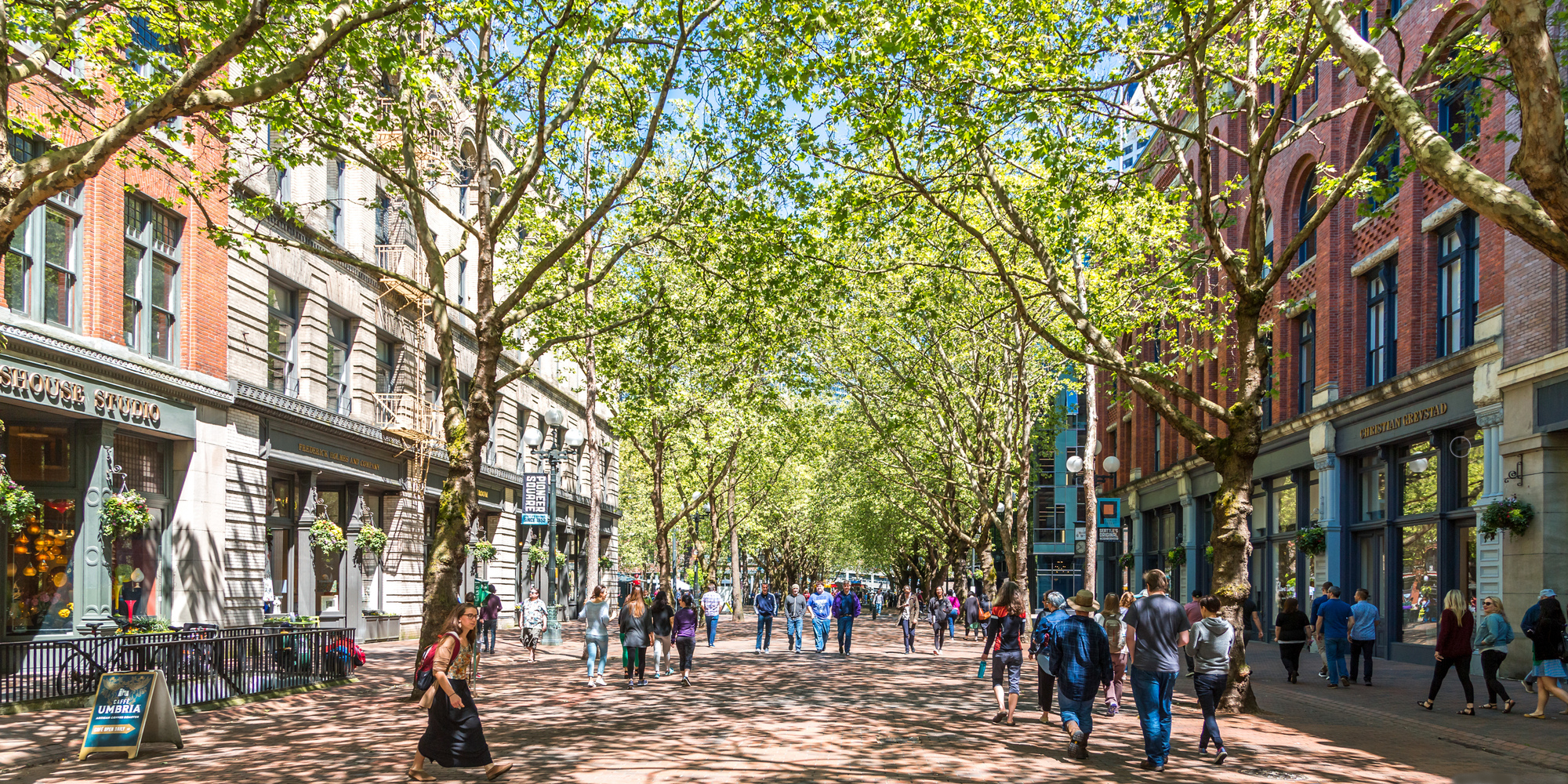According to Elemental Green, living in a walkable community comes with a host of benefits beyond convenience. Residents in walkable areas tend to be healthier, as walking promotes physical activity and social engagement. Additionally, walkable cities reduce carbon footprints, contributing to environmental sustainability with lower car emissions. Economically, these communities support local businesses and reduce the costs associated with car ownership, including gas, insurance, and maintenance.
Why choose a walkable city?
- Healthier lifestyle: Walking and biking improve cardiovascular health and promote active living.
- Sustainability: Reduced reliance on cars lowers greenhouse gas emissions and supports greener city planning.
- Economic benefits: Walkable neighborhoods attract vibrant local businesses and cut down on commuting costs.
- Community engagement: Walkable cities foster greater social interaction and community cohesion, as residents are more likely to spend time in shared public spaces.
Where it’s great to live without a car
WalkScore ranks the best US cities for walking, mass transit, and biking. We explored the Walk Score and share what makes each city great for living car-free.
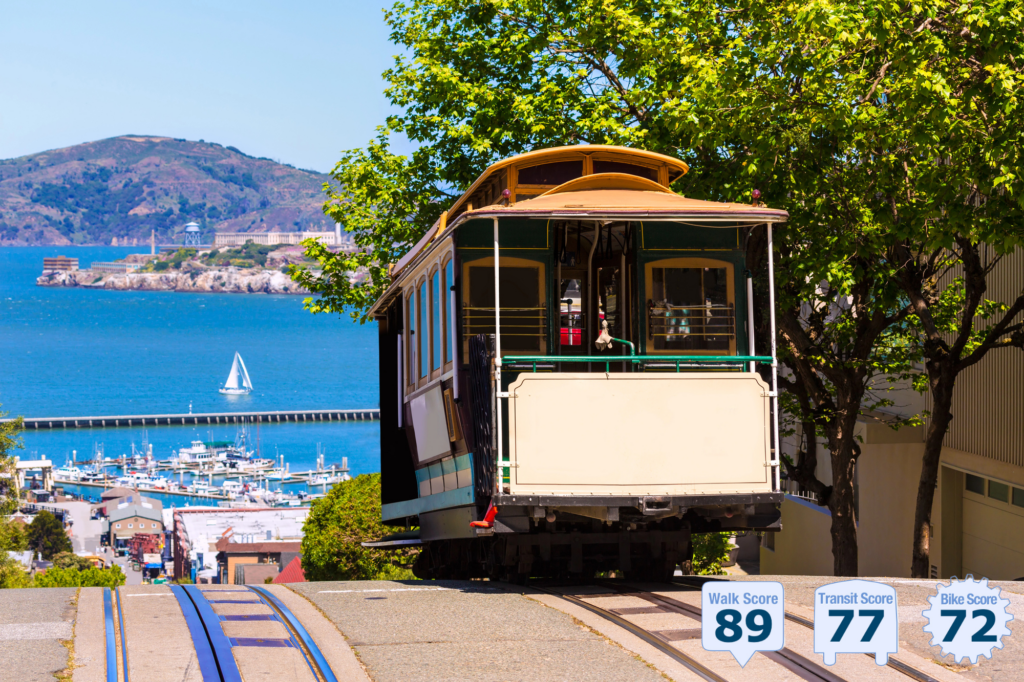
San Francisco, CA
Topping the charts with a Walk Score of 89, San Francisco offers the benefits of a compact city layout. Known for its iconic hilly terrain and cable cars, the city’s extensive public transit network—including buses, BART, and Muni—makes commuting easy for those without a car. Many of its neighborhoods, such as North Beach and SoMa, are extremely walkable, allowing residents to live a vibrant, active life without needing to drive.
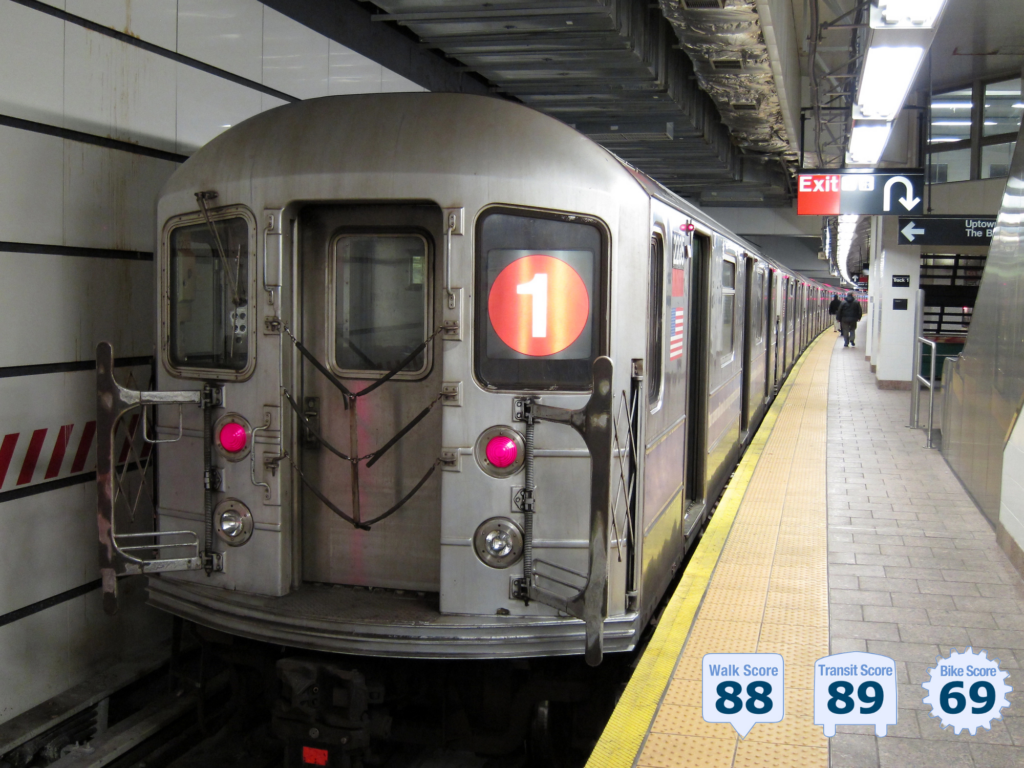
New York City, NY
A Walk Score of 88 makes New York City the epitome of a pedestrian-friendly city. Manhattan’s dense layout, iconic subway system, ferries, bike-share, and widespread bus routes make car ownership more of a hassle than a convenience. With almost every block offering access to grocery stores, restaurants, parks, and more, the city’s infrastructure is designed for residents who prefer walking or using public transit.
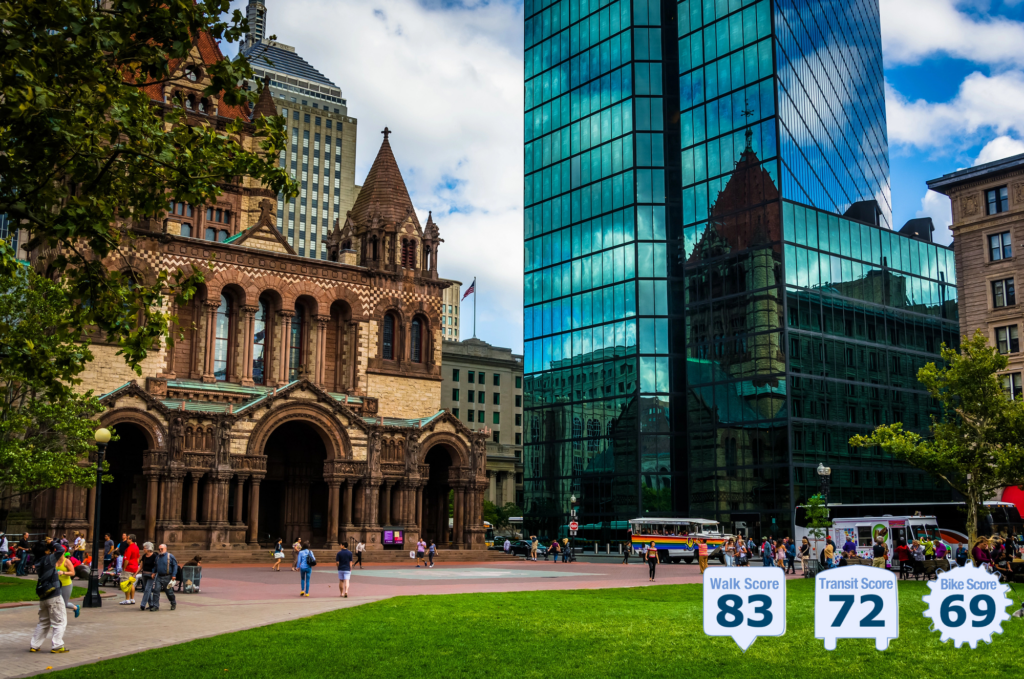
Boston, MA
Boston’s Walk Score of 83 is a testament to its pedestrian-friendly layout. One of the oldest cities in the US, Boston’s historic neighborhoods, narrow streets, and extensive public transportation network make it easy to live car-free. The MBTA subway and bus systems connect nearly every corner of this walkable city, while pedestrian pathways and bike lanes encourage walking or cycling.
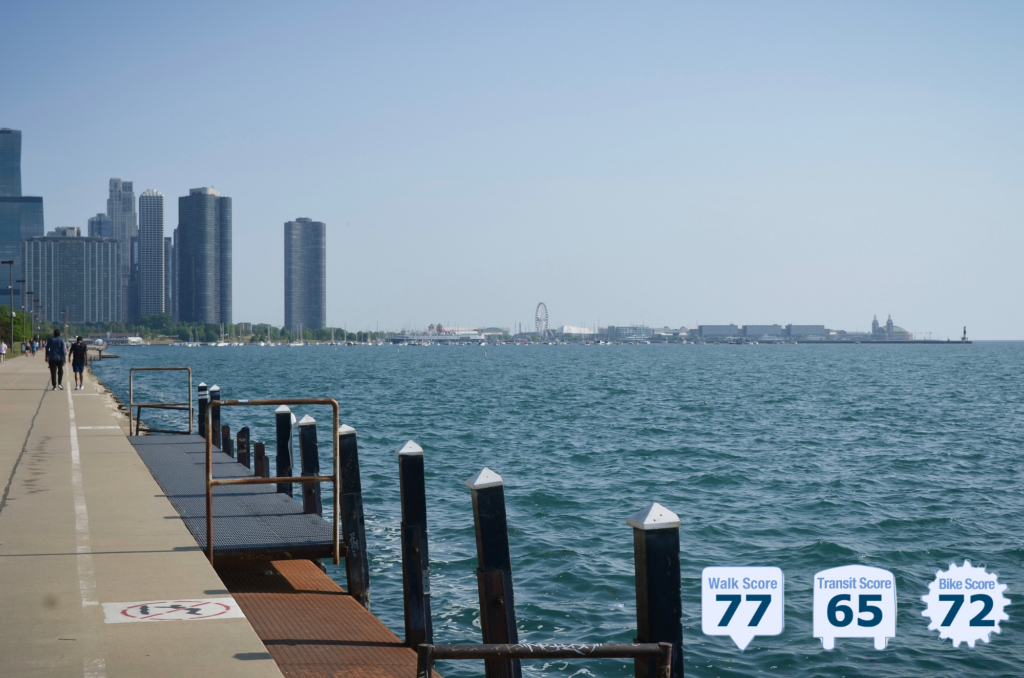
Chicago, IL
Chicago boasts a Walk Score of 77, making it a highly livable city for those looking to go car-free. The city’s extensive public transportation system, which includes the ‘L’ trains, buses, and Metra rails, ensures that you can easily get around. Neighborhoods like the Loop, Wicker Park, and Lakeview are particularly walkable, with easy access to restaurants, shops, parks, and other essential services. There is also an expansive park system, including the 18-mile-long Lakefront Trail.

Washington, DC
The US capital ranks highly with a Walk Score of 77. DC offers a comprehensive transit system in the form of the Metro, as well as historic walkable neighborhoods like Dupont Circle and Capitol Hill. Additionally, the city’s bike-sharing system, Capital Bikeshare, makes it easy to get around without a car.
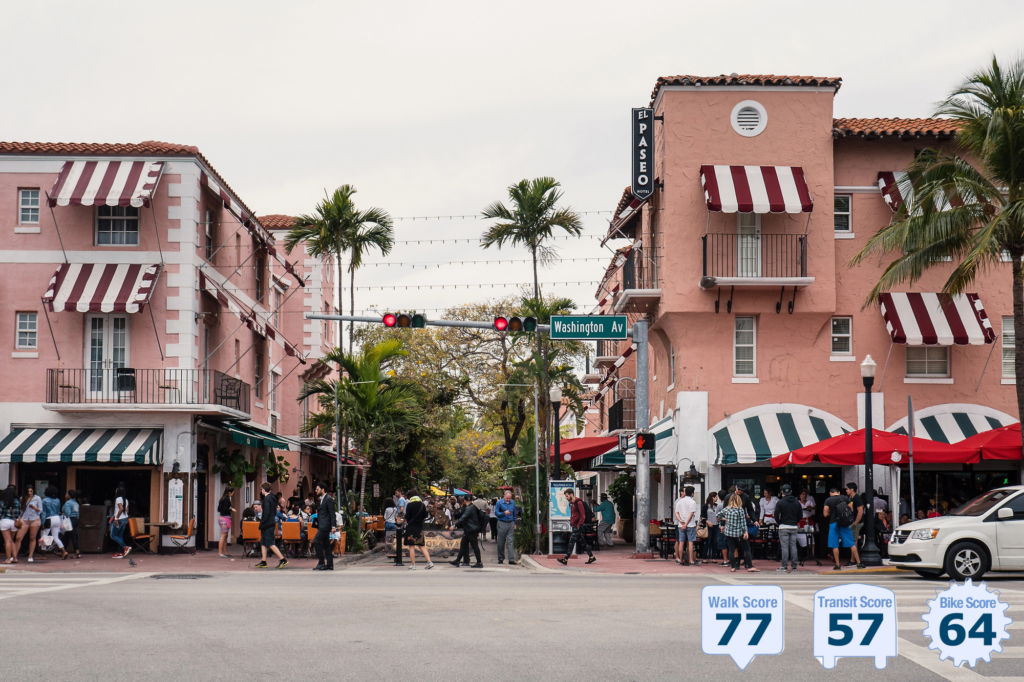
Miami, FL
Miami scores a Walk Score of 77 and is surprisingly walkable, particularly in downtown and South Beach. The city’s transit options, including buses, Metrorail, and Metromover, offer convenient alternatives to driving. Vibrant, pedestrian-friendly neighborhoods, like South Beach and Brickell, and proximity to beaches and parks make Miami appealing for those living without a car. The year-round walkable climate is also a plus!
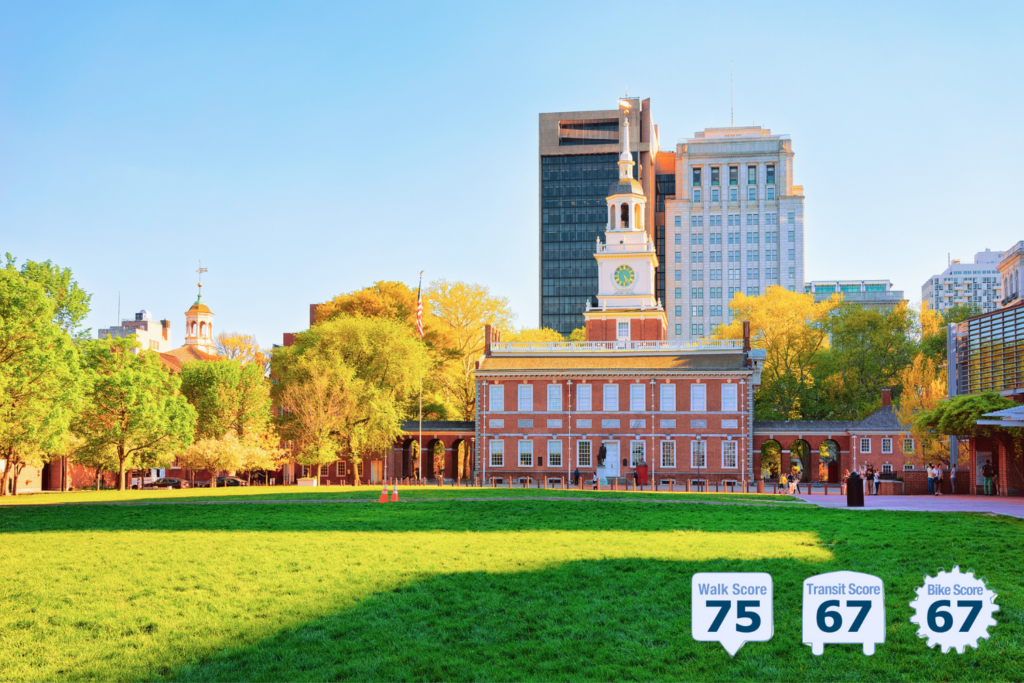
Philadelphia, PA
Philadelphia boasts a Walk Score of 75 and is another top contender for car-free living. Known for its rich history and grid-like layout, Philly offers a mix of old-world charm and modern convenience. The city’s extensive transit system (SEPTA) covers buses, trolleys, and trains, making it easy to get around without a car. Pedestrian-friendly neighborhoods like Center City and Old City are great for walkers and bikers alike.
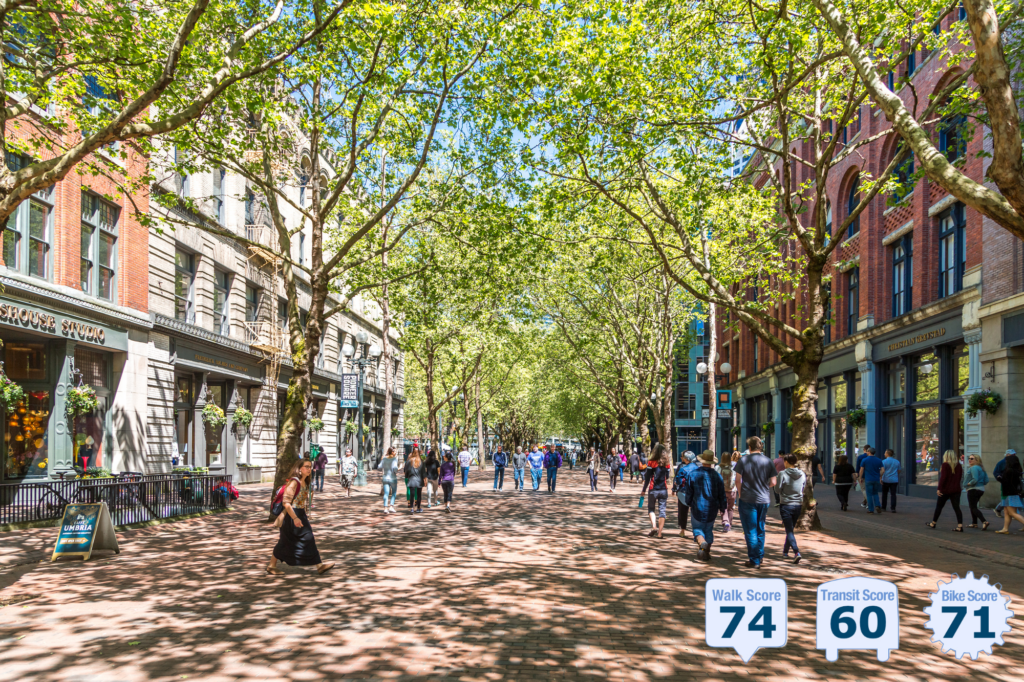
Seattle, WA
Seattle’s Walk Score of 74 makes it a highly livable city for those looking to ditch their cars. Known for its scenic views and active lifestyle, Seattle offers a mix of public transportation, bike lanes, and pedestrian-friendly neighborhoods like Capitol Hill and Belltown. They are also expanding their public transportation options, including light rail and bus services.
Benefits of Walkable Communities
With increasing awareness of the environmental and health benefits of walking, many people are choosing to live in walkable cities. These cities offer easy access to amenities, public transit, and green spaces—all without needing a vehicle. Walkable communities not only help reduce carbon emissions and traffic congestion, but they also encourage a healthier lifestyle by promoting regular physical activity.
Residents in these areas tend to have better overall health, greater opportunities for social interaction, and a stronger sense of community. Plus, living without a car saves money on fuel, insurance, and maintenance. By choosing a walkable city, you’re not only simplifying your daily life but also contributing to a healthier, more sustainable future.
